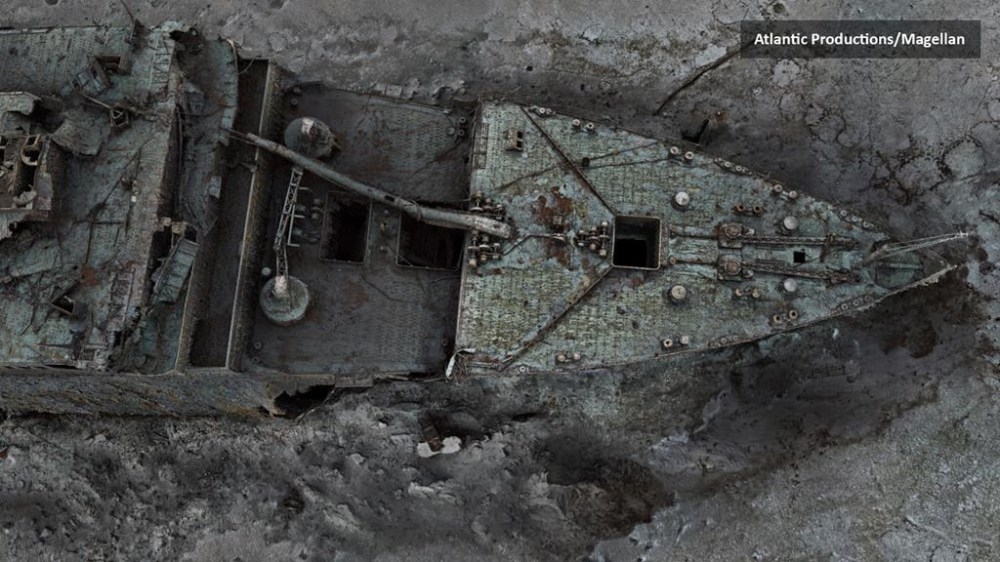Some quick facts about submersible missing near Titanic wreck off Newfoundland
Advertisement
Read this article for free:
or
Already have an account? Log in here »
To continue reading, please subscribe:
Monthly Digital Subscription
$0 for the first 4 weeks*
- Enjoy unlimited reading on winnipegfreepress.com
- Read the E-Edition, our digital replica newspaper
- Access News Break, our award-winning app
- Play interactive puzzles
*No charge for 4 weeks then price increases to the regular rate of $19.00 plus GST every four weeks. Offer available to new and qualified returning subscribers only. Cancel any time.
Monthly Digital Subscription
$4.75/week*
- Enjoy unlimited reading on winnipegfreepress.com
- Read the E-Edition, our digital replica newspaper
- Access News Break, our award-winning app
- Play interactive puzzles
*Billed as $19 plus GST every four weeks. Cancel any time.
To continue reading, please subscribe:
Add Free Press access to your Brandon Sun subscription for only an additional
$1 for the first 4 weeks*
*Your next subscription payment will increase by $1.00 and you will be charged $16.99 plus GST for four weeks. After four weeks, your payment will increase to $23.99 plus GST every four weeks.
Read unlimited articles for free today:
or
Already have an account? Log in here »
Hey there, time traveller!
This article was published 19/06/2023 (915 days ago), so information in it may no longer be current.
A search was underway Monday in an area of the Atlantic Ocean about 700 kilometres south of Newfoundland for a small submersible reported missing during a dive to view the wreckage of the Titanic. Here are a few facts about the missing vessel and its owner, Washington-based OceanGate Expeditions.
1. The Titan is a 6.4-metre manned submersible made of carbon fibre and titanium, designed to carry five people to depths of up to 4,000 metres for “site survey and inspection, research and data collection, film and media production, and deepsea testing of hardware and software,” according to OceanGate’s website. The craft includes a large viewport to allow passengers to view their surroundings, and is lowered into the water with the help of what the company calls a “patented, integrated launch and recovery platform.”
2. The vessel carried a combination of crew and tourists, who pay huge fees to view the wreck site and participate in research tasks. The Canadian Press reported that in 2019, the price was about $168,000 per ticket — an amount said to subsidize the company’s Titanic research mission.

3. The company says its mission includes chronicling the deterioration of the wreck of the Titanic, which sank in 1912, leading to the deaths of more than 1,500 people. The expeditions capture photos and video to document the condition of the site, as well as the plants and animals in and around it. “What we’re doing is something that’s going to add to the historical record of the Titanic — what is it like now, how is it decaying, what kind of marine life is there,” CEO Stockton Rush told The Canadian Press in 2019.
4. A promotional video on the company’s YouTube channel says the passengers depart from St. John’s, N.L., aboard a surface vessel for an eight-day journey. The trips down to the Titanic wreck are monitored by specialists in a command centre aboard the ship, on which guests are treated to lectures and conversations with scientists, and help out with various tasks related to research.
5. The company says the submersible includes a real-time health monitoring system, which makes it possible to analyze the effects of changing pressure on the submersible as it dives. The submersible is said to have a life-support system lasting 96 hours.
6. Rush founded OceanGate in 2009. It carried out successful Titanic expeditions in 2021 and 2022, the website says.
This report by The Canadian Press was first published June 19, 2023.


